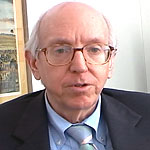
The U.S. Court of Appeals for the Federal Circuit recently
considered the standard for pleading direct patent infringement in light of
several recent Supreme Court cases that increased the amount of factual
allegations necessary to state a claim in a civil action.
R+L Carriers, Inc. v. DriverTech LLC (In re Bill of Lading Transmission and Processing System Patent Litigation),
Case No. 2010-1493
et al., (Fed. Cir. June 7, 2012). Traditionally, civil claims in U.S. federal courts were scrutinized
under a relatively generous "notice pleading" standard, which
required only that the allegations fairly notify the defendant of the claim. In
two cases,
Bell Atlantic Corp. v. Twombly,
550 U.S. 544 (2007) and
Ashcroft v. Iqbal,
556 U.S. 662 (2009), the Supreme Court chipped away at the concept of notice
pleading, requiring that a pleading allege sufficient facts so that the
allegations, taken as true, stated a claim for relief that is plausible on its
face.
In R+L Carriers,
the district court dismissed a 100-page complaint alleging direct and indirect patent
infringement for failure to plead a claim under Fed. R. Civ. P. 8(a)(2). The
Federal Circuit reversed the dismissal of the direct infringement claim. The
appeals court noted that the appendix to the Federal Rules includes Form 18,
which is a form patent infringement complaint. That complaint only alleges: “(1)
an allegation of jurisdiction; (2) a statement that the plaintiff owns the
patent; (3) a statement that defendant has been infringing the patent ‘by
making, selling, and using [the device] embodying the patent’; (4) a statement
that the plaintiff has given the defendant notice of its infringement; and (5)
a demand for an injunction and damages.” R+L
at 14, quoting McZeal v. Sprint Nextel
Corp., 501 F.3d 1354, 1357 (Fed. Cir. 2007). The court noted that under
Fed. R. Civ. P. 84, the forms accompanying the Federal Rules “suffice under
these rules and illustrate the simplicity and brevity that these rules
contemplate.”
Thus, the Federal Circuit concluded that Rule 84 and Form 18
govern the sufficiency of a patent infringement allegation, and that standard
can be changed only through the established procedure for promulgating and
amending rules, not by court decision (although, somewhat ironically, Supreme
Court approval is one step in the amendment process). The appeals court
concluded that, “[T]o the extent the parties argue that Twombly and its progeny conflict with the Forms and create differing
pleading requirements, the Forms control.” R+L
at 15.
As a result, the Federal Circuit’s standard for pleading
patent infringement is arguably more generous than the standard established by
the Supreme Court in Twombly and Iqbal for other civil claims.
For example, the Federal Circuit held that R+L’s complaint was adequate
even though it did not identify a single customer who purchased and used the
accused product. In addition, the pleading did not require specific factual
allegations concerning how the elements of the asserted claims were infringed,
or even which claims the plaintiff was asserting.
Notably, the court held that Form 18 only applies to pleadings
alleging direct infringement under 35 U.S.C. § 271(a). Allegations of indirect infringement, such as
contributory infringement under 35 U.S.C. § 271(c) or active inducement under § 271(b) continue to be governed by Twombly.







